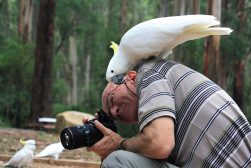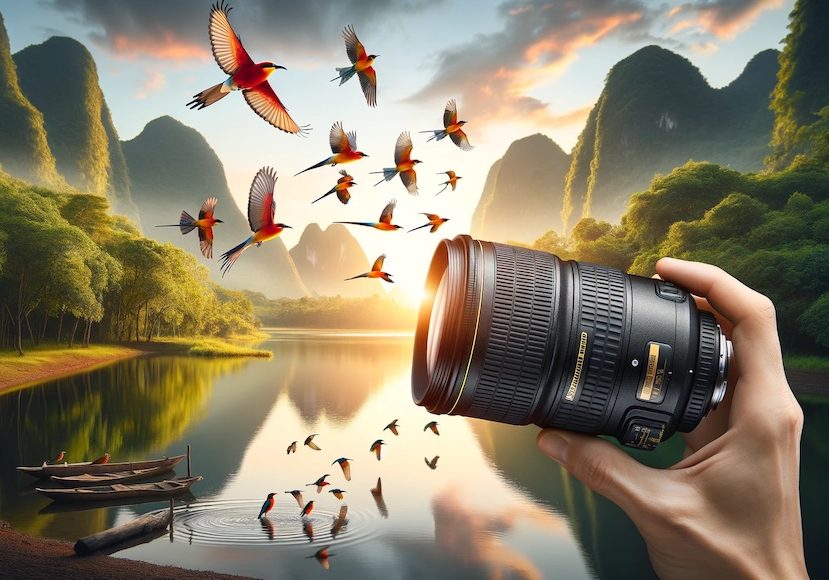
Best Nikon Lens for Bird Photography (2024 Guide)
Discover the top Nikon lenses for bird photography with our comprehensive guide, covering essential features and recommendations for stunning shots.
Shotkit may earn a commission on affiliate links. Learn more.
This guide will introduce you to the best Nikon lenses for bird photography on the market right now.
Bird photographers need specific lenses that will bring them closer to their subject while also making it easy to capture their quick movement.
But what lenses are those? How long do they need to be? Are there any other specifications they require?
Answers to these questions and more can be found below.
Let’s get started.
What is the Best Nikon Lens for Bird Photography in 2024?
Nikon NIKKOR 200-500mm f/5.6E (Editor’s Choice)
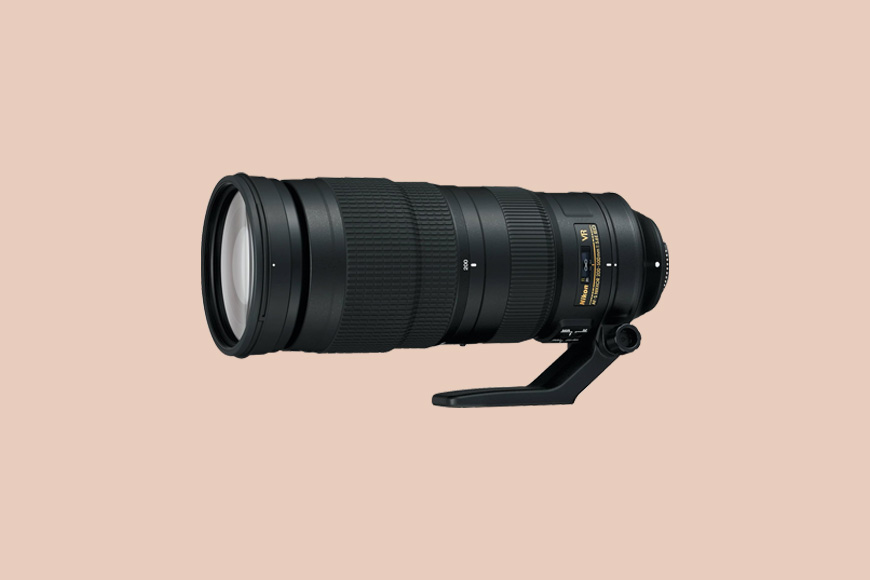
- Good autofocus
- Image stabilization
- Versatile
- Excellent optical quality
- Tripod collar
- Quite heavy
- Not the fastest lens
The Nikon NIKKOR 200-500mm f/5.6E ED VR is a versatile telephoto lens designed for bird and wildlife photography.
Many bird photographers who use Nikon end up with this lens after trying the third-party options, as it’s widely regarded as the best in its class.
While it’s not the fastest lens, it still has a constant aperture throughout the zoom range.
That’s helpful, as it means the lens maintains consistent exposure settings, which makes it easier to adjust during varying lighting conditions.
It has built-in Vibration Reduction (Nikon’s name for image stabilization), which helps you get sharper images by reducing the impact of camera shake.
The images you’ll get should be of high quality. This glass produces true-to-life colors with good contrast and minimal chromatic aberration.
The autofocus is good, too. Anything called a Silent Wave Motor should be quiet, and it’s fast and accurate, too, ideal for capturing elusive and easily spooked birds without disturbing them.
It’s weather-sealed, with a robust and durable design.
It’s a heavy lens, though, so you need to make sure you support it properly when not in use and also use proper technique when shooting handheld.
When you want to support it, either to avoid fatigue or for extended shoots, it has a detachable tripod collar, so you can easily attach it to a tripod or monopod.
If you’re on a budget, just know that you can get it refurbished for a much better price.
Nikon NIKKOR Z 100-400mm f/4.5-5.6 (Best Nikon Z Lens for Bird Photography)
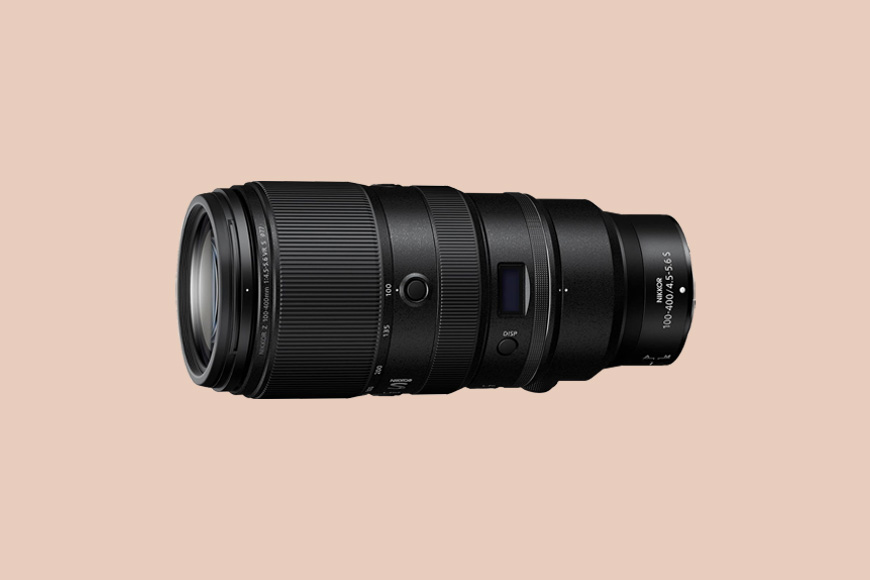
- Inner Balance and Vibration Reduction
- Great design
- Excellent optical quality
- Custom function buttons
- Weather-sealed
- Some softness when fully zoomed-out
- High price
The Nikon Nikkor Z 100-400mm f/4.5-5.6 is a versatile lens that, despite its broad zoom range, is still highly portable.
It has a great quality build, with both Vibration Reduction and Nikon’s Inner Balance technology, which helps keep a consistent centre of gravity when moving the zoom position.
That gives you extra stability when tracking moving subjects like birds.
Zooming in and out is extremely easy with this lens as it has a short throw rotation of just 80 degrees.
In layman’s terms, that’s the amount you have to turn the zoom ring, and in this case, you won’t have to turn it much at all to get from 100 to 400mm and back.
That’s extremely convenient when you’re trying to track birds that are flitting about all over the place, often towards you, then further away, and so on.
Another convenience is the two customizable function buttons directly on the lens.
You can set these up to initiate particular exposure settings (or other functions) and tailor your shooting experience to be able to react to specific situations.
While some users have noticed a little bit of image softness at the 400mm end, overall the lens’ image quality is excellent, with accurate colour rendering and good contrast.
Ah yes, its autofocus is good too; smooth in operation, quiet and accurate. You can also override this and use full manual focus.
Sigma 150-600mm f/5-6.3 (Best Value Nikon F Lens for Bird Photography)
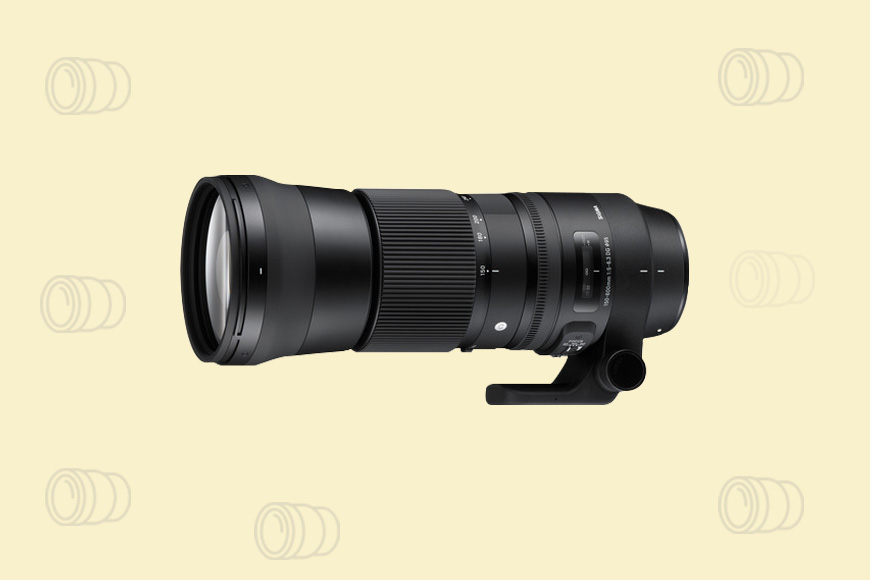
- Excellent variety of focal range
- Well-balanced lens
- In-built image stabilization
- Robust build
- Good value
- Variable aperture can limit photographers
This telephoto lens has, through its versatile focal range, an incredible reach, and at under US$1,000, it also represents great value for money.
Despite its size, it’s manageable and handles well. It has a good feel to it, rugged yet comfortable to use, robust, and well-balanced.
It’s fully weather-sealed, too, so if you’re out shooting birds in changeable weather conditions, you won’t need to worry about a bit of rain.
It also has built-in image stabilisation, which is absolutely essential when you’re shooting at these kinds of focal lengths.
Although you’ll likely be using a tripod when photographing birds, anything that gives you even a tiny bit of extra steadiness is a bonus.
Birds make small, fast movements, and those can be hard to capture.
If you’re shooting in less-than-perfect conditions, even a small gust of wind or a micro-adjustment you make to your hand position could cause the camera to shake.
Sometimes you might want or need to shoot handheld, and that’s not advisable in this context without image stabilization.
The Sigma 150-600mm f/5-6.3 has great autofocus capabilities too. It’s quick, quiet, and accurate.
It also provides good image quality, especially for a lens at this price point. The photographs are sharp with good contrast and colors and remain consistent throughout both focal and aperture range.
Nikon AF-P NIKKOR 70-300mm f/4.5-5.6E (Best Nikon Budget Lens for Bird Photography)
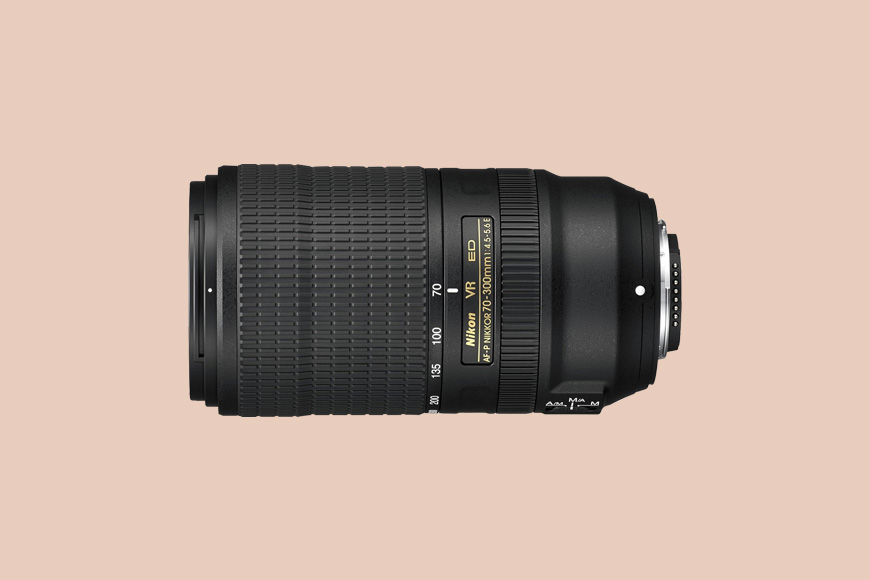
- Good value
- Compact
- Image stabilisation
- Quiet autofocus
- Exhibits some focus creep
- Variable aperture isn’t ideal
At under US$600, this birding lens is very good value.
You get a versatile focal range that will allow you to shoot perching birds relatively close up, with also enough reach at the long end to allow you to photograph subjects a significant distance away.
The variable aperture is not ideal, but it’s bright enough to let you shoot in a range of light conditions. And, due to lens compression, at 300mm, you should get some nice blur to pick your bird out from the background.
The lens has smooth, quiet autofocus and in-built Vibration Reduction, essential for handheld shots, especially when zoomed out.
Image quality is good, too, and the lens has a Super Integrated Coating that suppresses ghosting and chromatic aberration while enhancing color accuracy and clarity.
For anyone looking for an equivalent budget lens for Nikon mirrorless cameras, the Nikon Z version is the Tamron 70-300mm f/4.5-6.3 [Amazon | B&H]
Nikon NIKKOR Z 400mm f/4.5 VR (Best Nikon Z Prime Lens for Bird Photography)
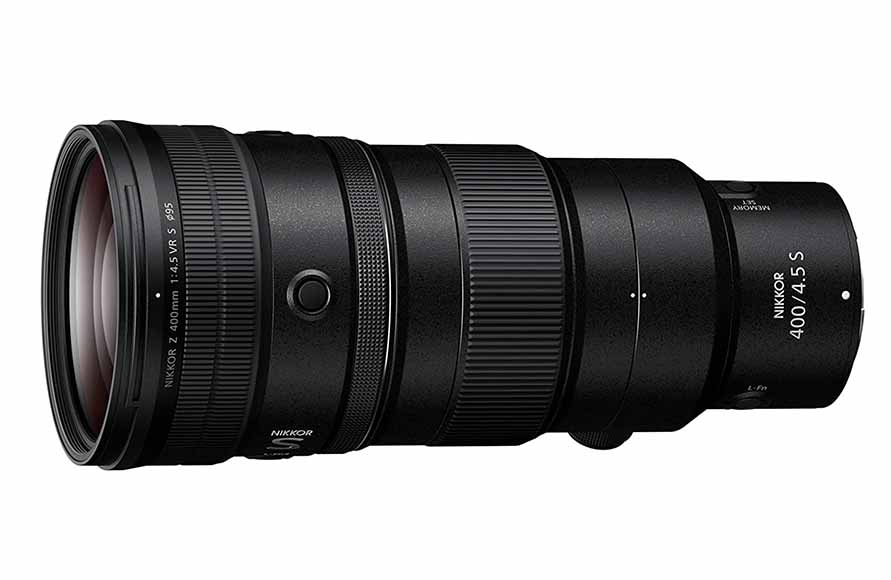
- Weather-sealed
- Programmable control ring
- Excellent design
- Compact
- Quite expensive
The Nikon NIKKOR Z 400mm f/4.5 VR is an extremely compact lens for its focal length, and Nikon claims that it’s the smallest, lightest 400mm they’ve ever created.
As such, it’s perfect for Nikon mirrorless bird photographers who like to shoot handheld and travel light.
400mm is a great all-round length that will help birders shoot their subjects at some distance.
Although an aperture of f/4.5 is not the brightest by any means, it’s still more than enough to shoot in varied light conditions and also lets you get creative with depth of field.
The lens has an advanced autofocus system that’s quiet and reliable – perfect to not disturb nervous birds – and this can be switched to full manual focus if you need it.
It also has built-in image stabilization to aid with handheld shooting.
It’s ergonomic and handles well. Like the 600mm below, Nikon has shifted the lens’ center of gravity towards the rear to make it feel lighter and react better to panning.
One welcome feature is a programmable control ring you can use to tailor your shooting experience.
As for the image quality, it’s high-class. Nano Crystal Coating takes care of any glare or chromatic aberration, and its overall optical quality produces crisp, well-contrasted, and nicely-coloured images.
Nikon AF-S NIKKOR 500mm f/5.6E PF ED (Best Premium Nikon F Prime Lens for Bird Photography)

- Vibration Reduction
- Excellent optical quality
- Good reach
- Weather-sealed
- Relatively lightweight
- Expensive
This is a premium piece of equipment for photographing wildlife and birds – and, at almost $4,000, it has the price tag to match.
Its fixed focal length of 500mm gives you significant reach for capturing distant bird subjects and is especially suitable for use in situations or locations where getting physically closer is not possible.
Despite its size, it’s still relatively lightweight for a lens of these specifications, so photographers who need to stay mobile and/or don’t want to be weighed down can be put at ease.
It handles well, too – smooth, with a good feel to it. And, though it’s relatively lightweight, it still boasts a durable build and is fully weather-sealed.
It has Vibration Reduction, which helps eliminate the negative effects of camera shake, especially when shooting handheld, and it has a tripod collar for use with a tripod or monopod.
An aperture of f/5.6 is not the fastest, but still pretty fast for a lens of this length. And, it’s more than enough to capture birds in a variety of lighting conditions.
Plus, thanks to the effects of compression, you can get good bokeh and blur to help isolate your subject from its background.
Nikon’s Silent Wave Motor ensures fast, accurate, and quiet autofocus.
This is crucial for bird and nature photography, where quick, discreet focusing is essential for capturing bird behaviour.
Image quality is outstanding: crisp, colorful, and well-contrasted.
There is minimal chromatic aberration, lens flare, or ghosting.
If you pair this lens with an equally high-end camera body, you can expect to get some exceptional bird images.
Nikon NIKKOR Z 600mm f/6.3 VR S Lens (Best Premium Nikon Z Prime Lens for Bird Photography)
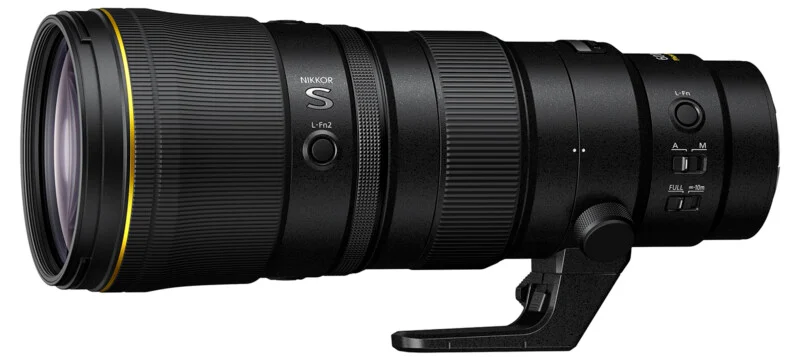
- Weather-sealed
- Custom function buttons
- Excellent handling
- Compact for size
- Great image quality
- Expensive
- Not the widest aperture
Another premium piece of bird and wildlife photography kit, this time for Nikon’s mirrorless system.
It is, again, a large lens, but one whose size and weight, like the 500mm above, is kept down by the lens having a Phase Fresnel element.
So, it’s compact relative to other telephoto primes on the market and can normally fit comfortably in a kit bag, even with a body attached.
That’s good news for bird photographers who want to travel light, but also for bird photographers in general as they can just whip their camera out and get shooting without missing any shots while setting up.
Handling is also excellent. Nikon has moved the center of gravity in this lens closer to the back, towards the camera body, which gives it a lighter feel and makes it excellent for panning and tracking birds in flight.
So, it’s designed with the handheld shooter in mind. And that shooter will also be helped out by the lens’ Vibration Reduction.
It’s weather-sealed, robust, and ergonomic, and it has two function buttons built-in, which you can program to tailor-make your shooting experience.
The autofocus is of great quality, as are the optics.
As you’d expect from a high-end lens like this one, the images it produces are detailed, with true-to-life colors and no distortions that could wreck your precious photographs.
Should You Use a Teleconverter For Bird Photography?
There are both benefits and drawbacks to using a teleconverter for bird and wildlife photography.
The most obvious advantage is the extended reach it gives you. A teleconverter increases the effective focal length of your lens, giving you more reach without the need for an additional lens.
As such, buying a teleconverter is a good budget option, as it’s much cheaper than buying a new, longer lens.
Also, teleconverters allow you to maintain the minimum focusing distance of the lens attached to them, which is useful if you like taking close-ups.
And, they’re lighter than buying a lens of a longer focal length. That’s something to consider if you’re a bird photographer who prioritizes portability.
The main disadvantage of teleconverters, though, is that they lose you some light.
For example, a 1.4x teleconverter reduces the amount of light entering the lens by one full stop, and a 2x teleconverter cuts it by two stops.
This can have a significant impact on autofocus performance and the overall image quality, especially in challenging lighting conditions.
They can also slow down autofocus performance.
Although modern cameras and lenses are equipped with advanced autofocus systems, having the added optical elements of a teleconverter often hinders the speed and accuracy of the camera’s autofocus.
Not only that, but your lens and camera’s image stabilization may be affected too. The magnification will increase the chances of camera shake, which you’ll have to mitigate with faster shutter speeds (again, affecting the low-light capabilities of your lens and camera).
Plus, while teleconverters can be of excellent optical quality and design themselves, they may still degrade your images to some extent. They don’t only magnify the image but also any flaws your lens may have, for example, the ghosting or chromatic aberration it produces.
So, when deciding whether or not to use a teleconverter, you really need to weigh your priorities. They can definitely be a good, cheap, and lightweight way to increase focal length, but you need to decide if the downsides are worth it.
And if you go for it, make sure you get the highest-quality teleconverter you can afford to minimize those drawbacks.
Below are a few recommended options.
Nikon Z Teleconverter TC-1.4x
The Nikon Z Teleconverter TC-1.4x is a compact and lightweight accessory designed for Nikon Z series mirrorless cameras and Z-mount lenses.
It maintains the maximum aperture of the attached lens, ensuring consistent low-light performance, and allows autofocus and image stabilization to work as normal.
The TC-1.4x delivers high optical quality, delivering sharp and detailed images while preserving the overall image quality of the lens.
It’s weather-sealed and easy to use.
[Amazon | B&H]Nikon Z Teleconverter TC-2x
The Nikon Z Teleconverter TC-2x is similar to the teleconverter above but provides more magnification.
It doubles your effective focal length, for example, turning a 300mm lens into a 600mm equivalent.
It’s compatible with Nikon Z series lenses and ensures their autofocus, exposure, and other functions remain operational.
It’s a compact, weather-sealed, and user-friendly attachment.
[Amazon | B&H]Nikon AF-S Teleconverter TC-14E III
Similar to the TC1.4x above, but for select Nikon AF-S and AF-I lenses.
Its 1.4x magnification transforms, for instance, a 300mm lens into a 420mm equivalent.
It preserves lens sharpness and clarity while minimizing chromatic aberrations. And, it maintains proper communication with the lens it’s attached to, ensuring all of its functions remain operational.
As with the others, it’s compact, lightweight, and weather-sealed.
[Amazon | B&H]Nikon AF-S Teleconverter TC-20E III
This is the 2x magnification version of the TC-14E III.
You get double magnification in a small, light, weather-sealed package that produces great image quality and doesn’t interfere with the normal operation of the lens attached to it.
[Amazon | B&H]FAQs about Nikon Bird Photography Lenses
Birders generally use telephoto lenses, either zooms or primes.
What lens is best for bird photography?
That best bird and wildlife photography lens is the one that most suits your budget, the birds you want to photograph, and the location in which you want to photograph them.
In general, telephoto zoom lenses are good for most people, while telephoto primes suit those who specialize more.
What is the best Nikon prime lens for bird photography?
I would say it’s the Nikon AF-S NIKKOR 500mm f/5.6E PF ED.
It’s a premium, pro-level piece of glass with fantastic optical quality.
Is 300mm enough for bird photography?
300mm is a pretty beginner-friendly focal length as it will get you in a position to photograph both perched and flying birds.
As you get more serious, however, the likelihood is that you’ll need a longer lens.
Is a 70-300mm lens good for bird photography?
They provide a good range and give you a mixture of versatility and affordability.
However, their variable aperture might not be the best in low-light situations.
What is the best lens for hummingbirds on Nikon?
Out of the ones in this guide, I’d recommend the Nikon NIKKOR Z 400mm f 4.5 VR. Otherwise, I’d go for the Nikon AF-S NIKKOR 300mm f/2.8G ED VR II.
The latter is an insanely expensive lens ($5,500) while the former is a bit less so ($3,000).
The most important thing with photographing hummingbirds is that your lens has the fastest aperture possible.
Hummingbirds move extremely fast themselves, so you need to use high shutter speeds and also create enough blur to isolate them from their backgrounds.
What is the bird photography lens for the D3500?
A good choice would be the Nikon AF-P NIKKOR 70-300mm f/4.5-5.6E ED VR.
It’s compatible, and it’s an affordable lens, which matches the affordable, entry-level quality of the Nikon D3500.
What is the bird photography lens for the D5300?
For the D5300, I’d go with our Editor’s Choice, the Nikon NIKKOR 200-500mm f/5.6E.
It’s a versatile length that’s perfect for birds, and this lens would take advantage of the D5300’s good autofocus specs.
What is the bird photography lens for the D7500?
Again, I wouldn’t look further than our Editor’s Choice.
The Nikon D7500 is a highly respected DSLR, and it should be paired with a highly respected birding lens.
What is the bird photography lens for the D850?
If you have a Nikon D850, you’re not messing around, and that massive sensor needs a pro-level bit of glass to get the most out of it.
So, why not use it with the premium lens from this guide? The Nikon AF-S NIKKOR 500mm f/5.6E PF ED.
This kind of prime (used with that 45.7-megapixel sensor) will get you amazingly rich and detailed shots.
Spotting scopes can aid in locating birds and observing them before you start taking shots.









